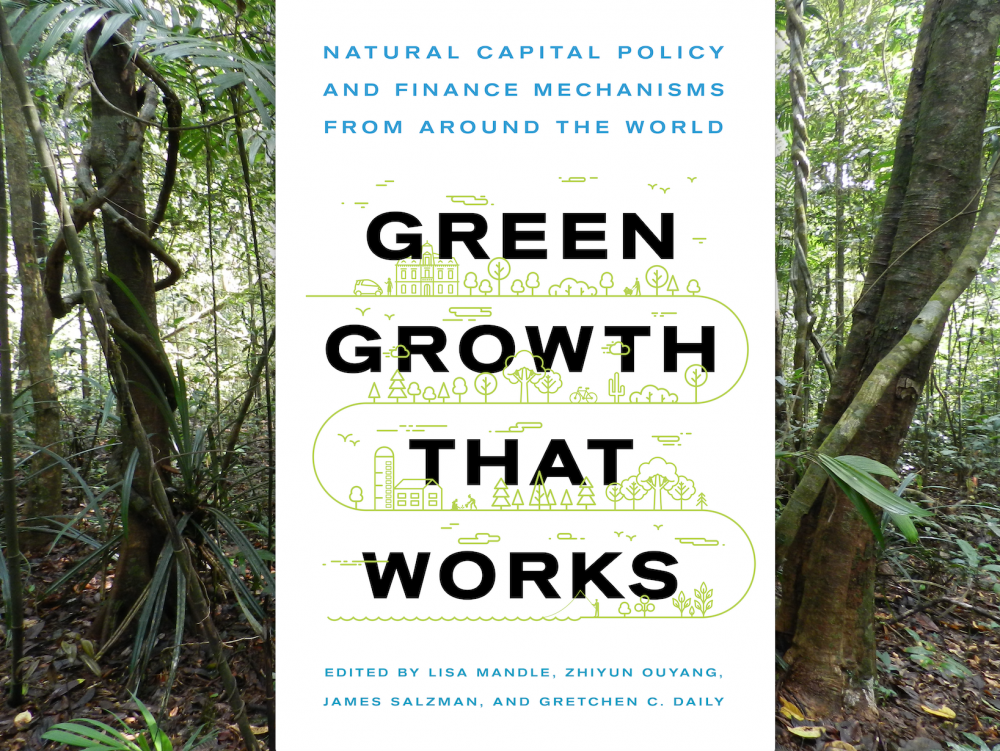
Green Growth

Ecosystems carry out services that would cost humans vast sums if we needed to perform them ourselves, a reality to which society is slowly coming around. However, these benefits remain largely out of sight in both policy and finance. Now a growing number of economists, ecologists and policymakers advocate making these hidden values explicit by offering payments for ecosystem services.
A new book, “Green Growth That Works” (Island Press, 2019), details how this can be achieved.
“The basic idea is that landscapes provide a huge range of critical services,” said coauthor James Salzman, the Donald Bren Distinguished Professor of Environmental Law at UC Santa Barbara’s Bren School of Environmental Science & Management. “It could be flood control, it could be water purification by watersheds, it could be storm buffering from wetlands and marshes. Each of these is critically important. But the problem is that none of these are explicitly prized in markets or protected by law.”
For example, a farmer who puts up fences along the banks of a river flowing through his land provides the public goods of water quality, habitat for wildlife and groundwater recharge —essentially giving these benefits away for free. If another, more profitable use for this land alongside the river comes up, say for development, it would make more financial sense for the farmer to take advantage of it. Hence, paying the farmer for the services derived from this stretch of river would encourage its continued protection.
This approach, as detailed in “Green Growth That Works,” seeks to change the incentives so that conserving and enhancing natural capital make financial sense for landowners. In fact, one of the book’s chapters looks at a similar real-world example of this.
The authors aimed their book at policymakers, scholars and entrepreneurs trying to better understand rapidly evolving field. It aggregates into a single volume material, discussions and examples from around the globe that had previously been scattered. “The goal of this is to create a user-friendly, one-stop shop for cutting-edge thinking and practice regarding green growth,” Salzman said.
Experts who have read the book see its potential. Jane Lubchenco, a former head of the National Oceanic and Atmospheric Administration explains, "’Green Growth That Works’ portrays visionary projects from around the world that demonstrate powerful outcomes of communities, governments and financial institutions working with nature to develop infrastructure thoughtfully through pioneering plans, policies and investments."
The project that would become the book started roughly two years ago when Salzman and his colleagues in the Natural Capital Project were hired by the Chinese government to create a guide of international best practices for using financial mechanisms to conserve and restore natural capital. China has become a world leader in the practice of paying for ecosystem services. In fact, the country hosts the largest ecosystem services market in the world, according to Salzman: tens of billions of dollars change hands for ecosystem services every year.
“We realized that the work that we had done for China could be adapted for a much broader audience,” he noted.
The book’s goal is to assess and highlight financial and market mechanisms that change the incentives of landowners — to make trees worth more standing than cut down. It centers around case studies of investments in natural infrastructure and includes discussions of the theory underpinning this strategy.
For instance, one chapter focuses on the relationship between New York City and communities in the Catskill mountains, perhaps the most famous example of payments for ecosystem services. Since the early 1900s, New York has sourced most of its drinking water from the Catskills and Delaware watersheds, 125 miles northwest of the city. As development pressures threatened water quality, rather than build a multi-billion-dollar treatment plant, the city paid upstate communities to manage their land in a way that protects the water quality. This investment in “green capital” instead of “built capital” saved the city billions of dollars. From a purely fiscal perspective, investing in nature was a smart move.
New York City’s actions illustrate a common motif when considering services provided by nature: Often investing in our landscapes obviates a costlier investment in infrastructure, while providing other benefits for wildlife.
“This is a really dynamic area,” Salzman said. “The Amazon is burning. Coral reefs are bleaching. We need to find new ways, additional ways, effective ways, to conserve natural capital that make financial sense. And it can’t come soon enough. That’s what this book is all about.”



